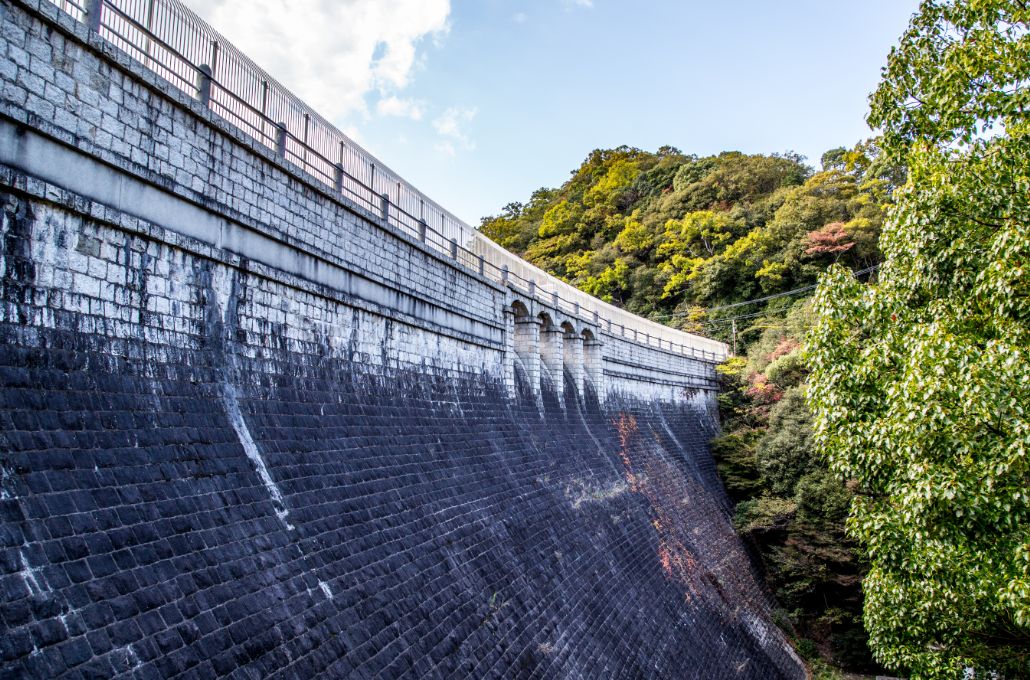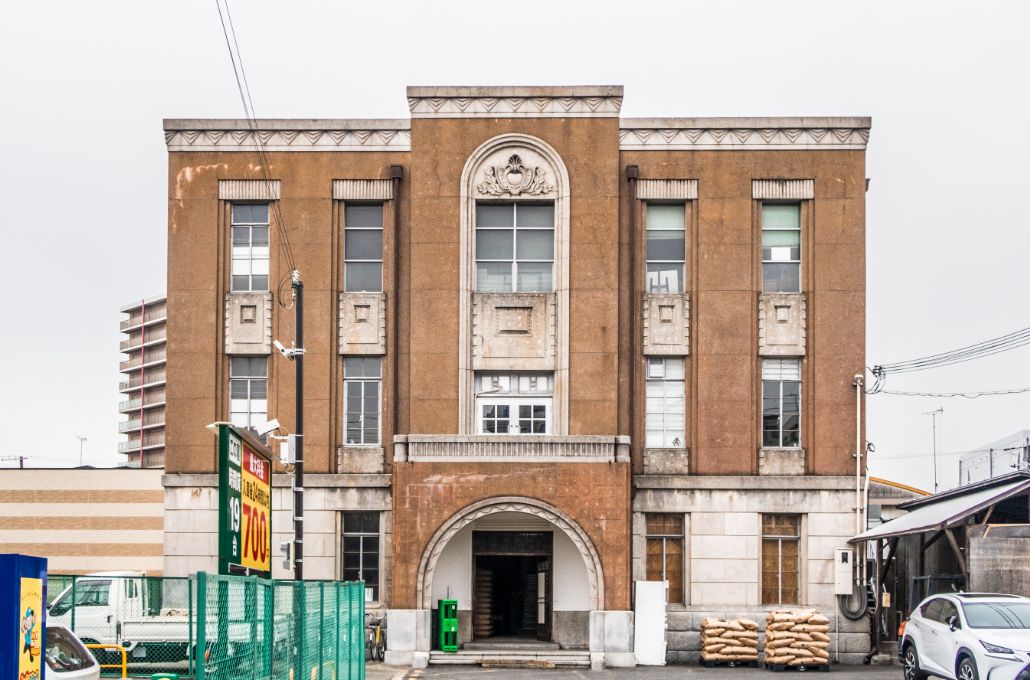Kobe, which blossomed into a modern port city after Japan opened to international trade, occupies a narrow cone-shaped area of land at the southern foot of the Rokko Mountains. It was a city with poor water resources, but developed into an international port city after modern public water projects, including the construction of a large dam, made Kobe Water famous.
The Tachigahata Dam was completed in 1905 to manage the water supply system’s Karasuhara water source.
It is Japan’s fourth-oldest concrete gravity dam. It is curved with a total height of 33.33 meters, a bank length of 122.42 meters, and an effective storage capacity of 1,315,139 cubic meters. It is constructed with rough surface stones on mortar and a four-arch spillway at the center of the dam.
The water intake tower, designed by Sano Tojiro, is decorated with classical ornaments. The words “”Nourishes Without Running Dry”” are engraved on a plaque at the entrance,.
After struggling with water leakage in the Gohonmatsu Dam of the Kobe Municipal Waterworks, Sano went to India to conduct research and used what he learned on the Tachigahata Dam.
He adopted elaborate measures to prevent water leakage, such as grouting some of the foundation rock and adding finely ground bricks to the sand in the mortar to make it watertight.
This was the first dam in Japan where a village had to be evicted for its construction. It is also the first dam to use a sediment bypass system.




